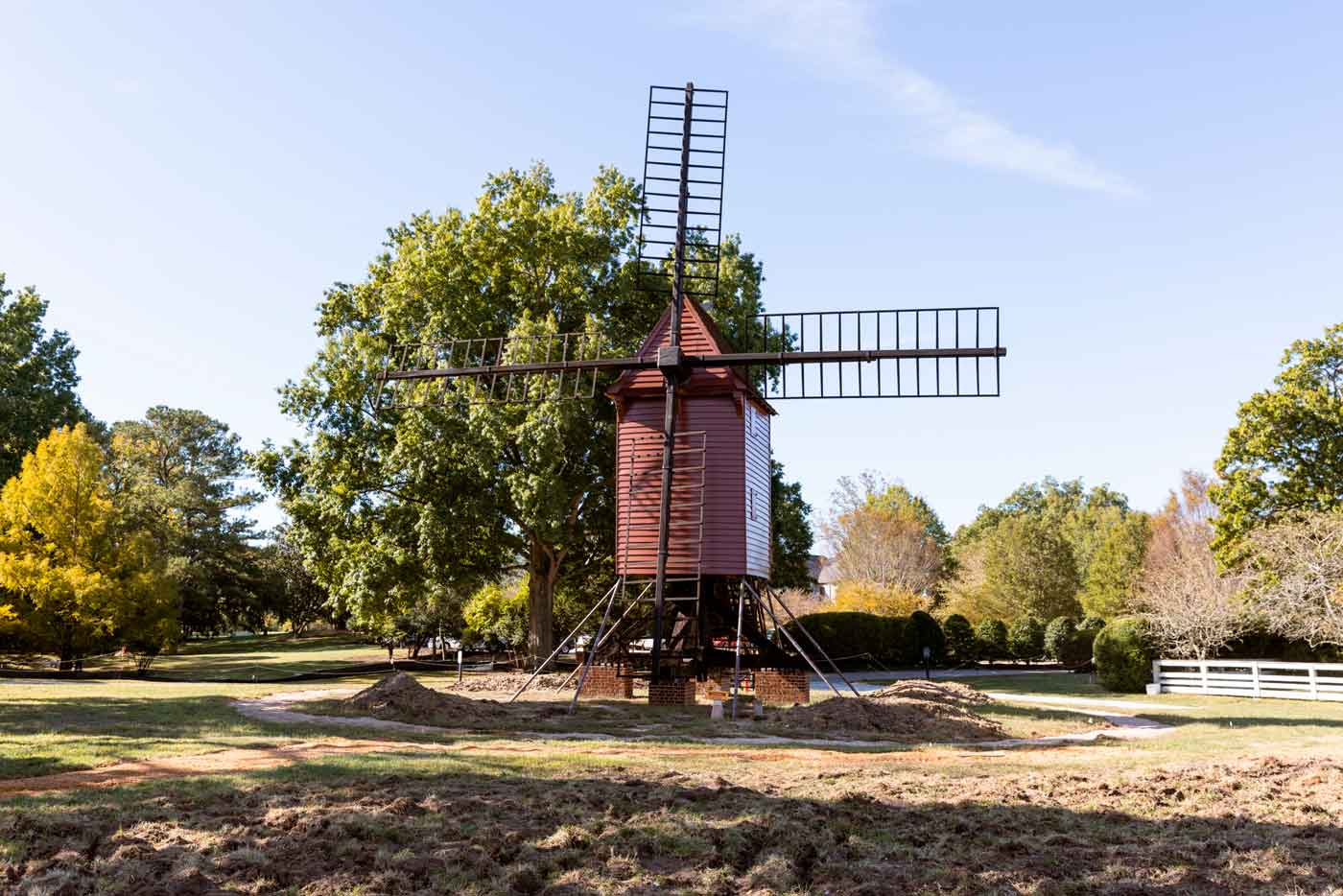In 18th-century Virginia, farming was an essential part of life that more than 90% of Virginians participated in. Gentry men living in Williamsburg such as Peyton Randolph and Robert Carter III also owned plantations outside of the city and relied heavily upon enslaved labor to grow the crops that added to their wealth and status. Middling and poorer families ran smaller farms to sustain their families and make a living.
We recently sat down with Ed Schultz, Colonial Williamsburg’s first master farmer, to talk about this important trade and what visitors can expect to see during a visit to their site.

WHY ARE YOU PASSIONATE ABOUT SHARING HISTORIC FARMING WITH OUR GUESTS?
We are all farmers. Whether you are practicing it in a field or a garden, it is the essential thing that makes humanity thrive. So easy is this to forget in our busy, urbanized life that we all eat or wear the products of agriculture. I have asked hundreds of guests who their farmer is and most say their grandparents. I hope that everyone can see that the farmer is in you. And we help you make those connections through the farmers of the past.
WHO WERE THOSE FARMERS OF THE PAST? WHAT DID A TYPICAL DAY LOOK LIKE?
Well over 90% of people in Virginia both enslaved and free and regardless of gender worked the land planting tobacco for money and corn for food, but also planting crops like cotton, wheat and flax. The day starts with work and ends with thoughts about the next day’s work. An old saying I learned is “feed your livestock before yourself because they can’t feed themselves,” so they would feed their horses, oxen, hogs and chickens before light and would then have their own breakfast and be in the field by first light. They would work about four to six hours, take a one-to-two-hour break, and then get back into the fields until dark. This would happen on a six-day schedule with rest on the seventh. Light varies with the seasons, so in high summer when crops are growing, they could work up to 12 hours, but that number may change to eight in the winter.
“We are all farmers. Whether you are practicing it in a field or a garden, it is the essential thing that makes humanity thrive.”
Ed Schultz, Master Farmer
WHAT IS LIKE WORKING WITH HISTORIC CROPS? DO YOU HAVE A FAVORITE?
Tobacco is like a garden plant in a field. Garden plants have to be worried over and nurtured carefully. Imagine that same care in a field with hundreds of these plants and you are understanding the worrisome needs of tobacco. Cotton can be a heartbreaking crop in this area. We have a shorter growing season than further south, so it matures slowly. But when the heat comes in mid-June and July, it jumps. And then there is the hope for rain to produce bolls…but not too much rain that the bolls open early. I find corn a joyous kind of crop. To me, it is beautiful and bountiful. The vigorous growth and stature of the stalks is compelling. When pollinating it has a pleasant smell and the ears have rows and rows of food on them. What could be better!
WHAT CAN GUESTS EXPECT TO EXPERIENCE AT EWING FIELD
Think of Ewing Field as a laboratory for learning about the people of the past. We engage in a methodology of experimental archaeology, which is about learning by doing. So, we do things just as our ancestors would and we learn through that work. We are ever conscious and thoughtful about why and what we are doing as we grow and experiment with crops, and by doing it we are able to understand these people of the past.

WHAT ADVICE WOULD YOU GIVE ASPIRING FARMERS
Hope and perseverance are the most important things in farming. A farmer is at the mercy of nature and some things happen behind any possibility of one’s control. Work hard to do your best — always. Of course you will make mistakes. Learn from them, then do it again and again and again. After 50 years of farming throughout my life, I still make mistakes. But I’m always learning.



